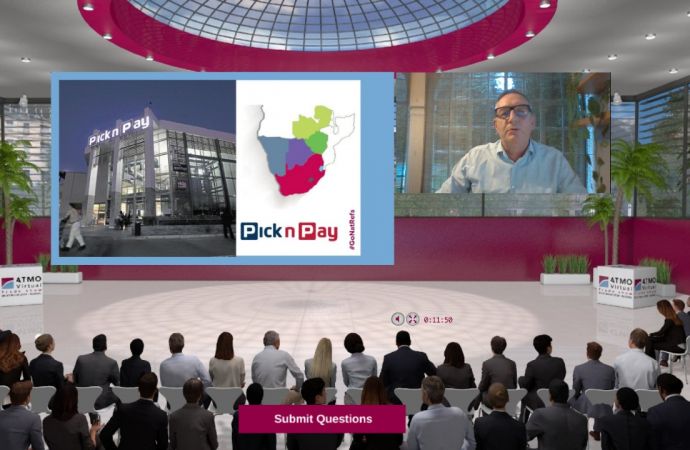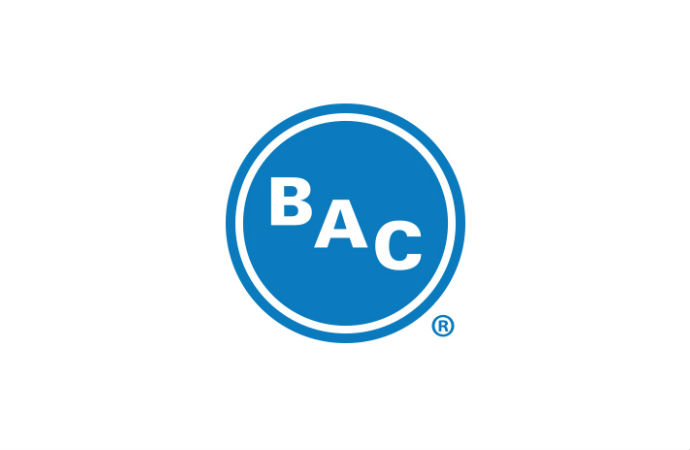The U.S. chain’s first transcritical system in a New Jersey store continues to outperform legacy systems.

Adiabatic gas coolers that helped improve the efficiency of the transcritical CO2 system at a Weis Markets store in Randolph, New Jersey, U.S.
Based on the energy savings and overall performance of its initial transcritical CO2 system at a store in Randolph, New Jersey (U.S.), Weis Markets has decided to install the refrigeration technology in two new stores next year.
Based in Sunbury, Pennsylvania (U.S.), Weis Markets is a 108-year-old Mid-Atlantic food retail chain of nearly 200 stores.
Its 54,000ft2 (5,017m2) store in Randolph opened in July 2018, with an Advansor transcritical CO2 rack from Hillphoenix, and two adiabatic gas coolers from Baltimore Aircoil (BAC). (See “Weis Markets’ Journey to CO2, Accelerate America, September 2019.) The two new stores will use transcritical racks from Zero Zone equipment, and BAC adiabatic gas coolers, noted Paul Burd, manager, manager, refrigeration engineering for Weis.
While the cost of transcritical CO2 equipment remains higher than that of traditional systems, Burd noted that he is seeing the installed cost of transcritical CO2 equipment “coming down” with all manufacturers. Last year, he said that Weis has found that the cost of transcritical technology was “getting closer to where it needed to be for the ROI.”
Weis is also installing another natural refrigerant – propane (R290) – in stand-alone point-of-purchase beverages cases throughout the chain.
The Randolph store’s transcritical rack employs three low-temperature and five medium temperature compressors, with a CO2 charge of 1,100lbs (499kg). It supplies a low-temperature capacity of 343.2kBTU/hr at -24°F (-31°C), and a medium-temperature capacity of 1,137.3kBTU/hr at 19°F (-7°C).
Last year, Burd reported on the energy advantages observed in the Randolph store’s transcritical CO2 system, compared with different systems at three other stores of similar size and refrigeration load. He provided data on the systems at the ATMOsphere America conference (see “Weis Markets Reports Dramatic Energy Savings with Transcritical CO2,” Accelerate Magazine, July-August 2019) and at the Food Marketing Institute’s Energy & Store Development Conference (see “Weis Markets’ CO2 System Avoids Transcritical Mode in First Year, Accelerate Magazine, October 2019.) ATMOsphere America is organized by shecco, publisher of Accelerate.
The other stores employed systems based on HFC or HFO blend refrigerants.
A few minor leaks
This year, the Randolph store “has operated very well,” said Burd. “We have had a few minor refrigerant leaks, mostly at access fittings, and also have had two ball valve failures/leaks.”
In the event of a power failure, the store has a 2HP condensing unit to prevent pressure build-up in the surge tank that could lead to large CO2 losses.
With the help of its two adiabatic gas coolers, the transcritical system did not once enter less-efficient transcritical mode over the first year of operation, including during summer months when ambient temperatures exceeded 100°F (38°C). This year, it did experience transcritical mode “multiple days in July and early August,” said Burd.
He attributes that to a failed water pump in one of the adiabatic gas coolers. Since the pump was replaced, the system has not gone into transcritical mode. Weis has also installed software recently developed by BAC “that will send an alarm to our EMS system if a pump fails,” said Burd.
Burd acknowledged the system consumed more energy than usual when it entered transcritical mode. Even so, he added, “this store is still better than any of our legacy stores” with regard to energy consumption of the refrigeration system.
Weis has continued to monitor the energy performance of the transcritical system in 2020, along with that of five other legacystores with a medium-temperature glycol secondary loop/low-temperature DX system (with adiabatic condensing) or a DX-only system.
Through July 14, the transcritical system consumed 250,000kWh. By contrast, the other stores consumed 340,000 kWh, 380,000KWH 400,000KWH, 410,000kWh and 450,000kWh.
When Weis decided to install a transcritical CO2 system in 2018, the appeal of CO2 as a future-proof refrigerant factored into its decision. “We’ve gone through refrigerant conversions,” said R. Kevin Small, vice president, construction and development for Weis. “Now there’s a conversion from R404A. Are we going to be required to convert from R448A? We’re looking for a place where we aren’t looking at another conversion down the line. So it would be nice to get to a natural refrigerant.
System Specs
Weis Markets’ new store in Randolph, N.J., uses a transcritical CO2 system with the following specifications:
- Rack: Hillphoenix
- Two adiabatic condensers: Baltimore Aircoil
- Compressors (5 medium-temperature, 3 low-temperature): Bitzer
- Controllers: Danfoss
- Low-temperature capacity: 343.2 kBTU/hr at -24°F
- Medium-temperature capacity: 1,137.3 kBTU/hr at 19°F
- Low temperature required in cases: 260.8 kBTU/hr required at -22°F
- Medium temperature required in cases: 632.8 kBTU/Hr required at 20°F
- CO2 charge: 1,100 lbs
- Defrost: Electric (LT)/ Off-Time (MT)
- Heat Reclaim: For HVAC and water
This article is included in a special issue of Accelerate focusing on Best Practices in Food Retail. Read it here.
Related stories




